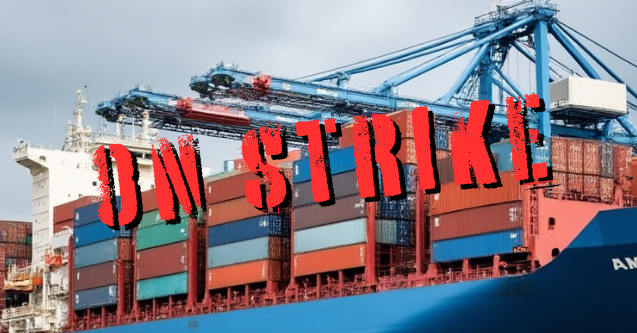US Port Workers Strike: How It Began and What It Means for Your Everyday Shopping
The recent strike by U.S. port workers has the potential to create significant ripples across the American economy and impact the daily lives of average consumers. With thousands of longshoremen from the International Longshoremen’s Association (ILA) staging a work stoppage at East and Gulf Coast ports, questions arise about what caused this strike, how long it could last, and what it means for everyday shoppers.
Let’s delve into the reasons behind the strike, its potential duration, and the expected impact on U.S. consumers.
What Led to the Strike?
The strike began after labor negotiations between the ILA and the United States Maritime Alliance (USMX) broke down following the expiration of their labor contract. At the core of the dispute are three primary issues: wages, working conditions, and the growing threat of automation at U.S. ports.
- Wage Disputes:
Port workers are demanding substantial wage increases to offset the rising costs of living and inflation. Currently, top-scale port workers earn $39 an hour (around $81,000 annually), but overtime and extended shifts often push yearly earnings to over $200,000 (The Associated Press). The union argues that longshoremen sacrifice significant family time, working up to 100 hours a week, which isn’t sustainable long-term. They also want compensation to reflect the surge in profits that shipping companies enjoyed during the pandemic, a period when supply chain bottlenecks made ports a lucrative business. - Concerns Over Automation:
The ILA is pushing back against the increasing use of automation at ports, which they fear will lead to job losses. While automation can speed up unloading and improve efficiency, the union contends that it threatens their livelihood. Many U.S. ports, such as the Port of Mobile, Alabama, have already adopted semi-automated systems that process trucks and containers without human labor (The Associated Press). Industry experts argue that without more automation, U.S. ports risk becoming uncompetitive compared to highly automated facilities in Europe and Asia. - Political and Economic Timing:
The strike comes at a critical time politically, with the 2024 presidential election on the horizon. President Biden, known for his pro-labor stance, is in a delicate position as he tries to balance supporting union workers with the need to protect the economy. With the memory of pandemic-era supply chain chaos still fresh, the union may feel it has strong leverage to push for its demands (The Associated Press)(Retail Industry Leaders Association).
How Long Until the Strike Affects Your Shopping?
The impact of a port strike on everyday shopping largely depends on the type of products in question and how long the strike lasts. Here’s a breakdown of what to expect:
- Short-Term Impact (1-2 Weeks):
- Fresh Produce and Perishables:
Items like fresh fruits and vegetables, which depend on timely shipments, are the first to be affected. For example, bananas and mangoes coming from Central and South America could face supply disruptions within days (Business Insider). Importers are already switching to air freight, a more expensive alternative, to avoid spoilage.
- Fresh Produce and Perishables:
- Medium-Term Impact (2-4 Weeks):
- Retail Goods and Electronics:
Retailers often stock up ahead of the holiday season, so a short-term strike may not disrupt these goods immediately. However, if the strike continues into November, some inventories may start to run low, leading to increased prices and limited availability (The Associated Press). High-demand items like electronics and clothing could be particularly affected as inventory reserves dry up.
- Retail Goods and Electronics:
- Long-Term Impact (4+ Weeks):
- Auto Parts and Manufacturing Supplies:
Manufacturing industries that operate on a just-in-time delivery system, such as the automotive and pharmaceutical sectors, are highly vulnerable to prolonged disruptions. A strike extending beyond a month could halt production, cause layoffs, and lead to shortages of critical components and parts (The Associated Press)(Retail Industry Leaders Association). - General Consumer Goods:
If the strike persists for over a month, broader consumer categories such as household goods, packaged foods, and even holiday decorations could be impacted, creating visible shortages and driving up prices.
- Auto Parts and Manufacturing Supplies:
Potential Economic Consequence
Each day of the strike causes massive disruptions, as East and Gulf Coast ports handle over half of all U.S. imports. The estimated economic impact is around $540 million per day (Business Insider). If the strike continues, backlogs will grow, creating a cascade effect throughout North American supply chains. Analysts estimate that every day of the strike will require up to five days to clear the resulting congestion (Retail Industry Leaders Association).
For now, many retailers and manufacturers have accelerated shipments or rerouted goods to West Coast ports to avoid immediate shortages. However, this is only a temporary solution, and extended delays could have a significant impact on supply chains during the critical holiday season.
Will the Government Intervene?
There is ongoing speculation about whether the Biden administration will step in to end the strike. In 2022, the administration helped avert a nationwide rail strike, but this dispute falls under the National Labor Relations Act, not the Railway Labor Act, which gives the government fewer options. One possibility is invoking the Taft-Hartley Act, which allows the President to seek a court order to pause the strike for 80 days if it threatens national safety or health (Retail Industry Leaders Association). However, given Biden’s pro-union stance and the political implications, such intervention may only come as a last resort.
The Bottom Line: What Does It Mean for You?
If the strike is resolved within a couple of weeks, most consumers may not notice significant changes aside from slight delays in fresh produce availability. However, if the strike extends into the holiday season, the average American could experience rising prices, product shortages, and limited availability of key items such as electronics, auto parts, and even seasonal gifts. Retailers and manufacturers will have to navigate significant challenges to keep shelves stocked and production lines running.
Ultimately, this strike has highlighted the fragile nature of global supply chains and the growing tensions between labor and automation in a rapidly changing economy. How it is resolved could set the tone for future labor negotiations in critical industries nationwide.





